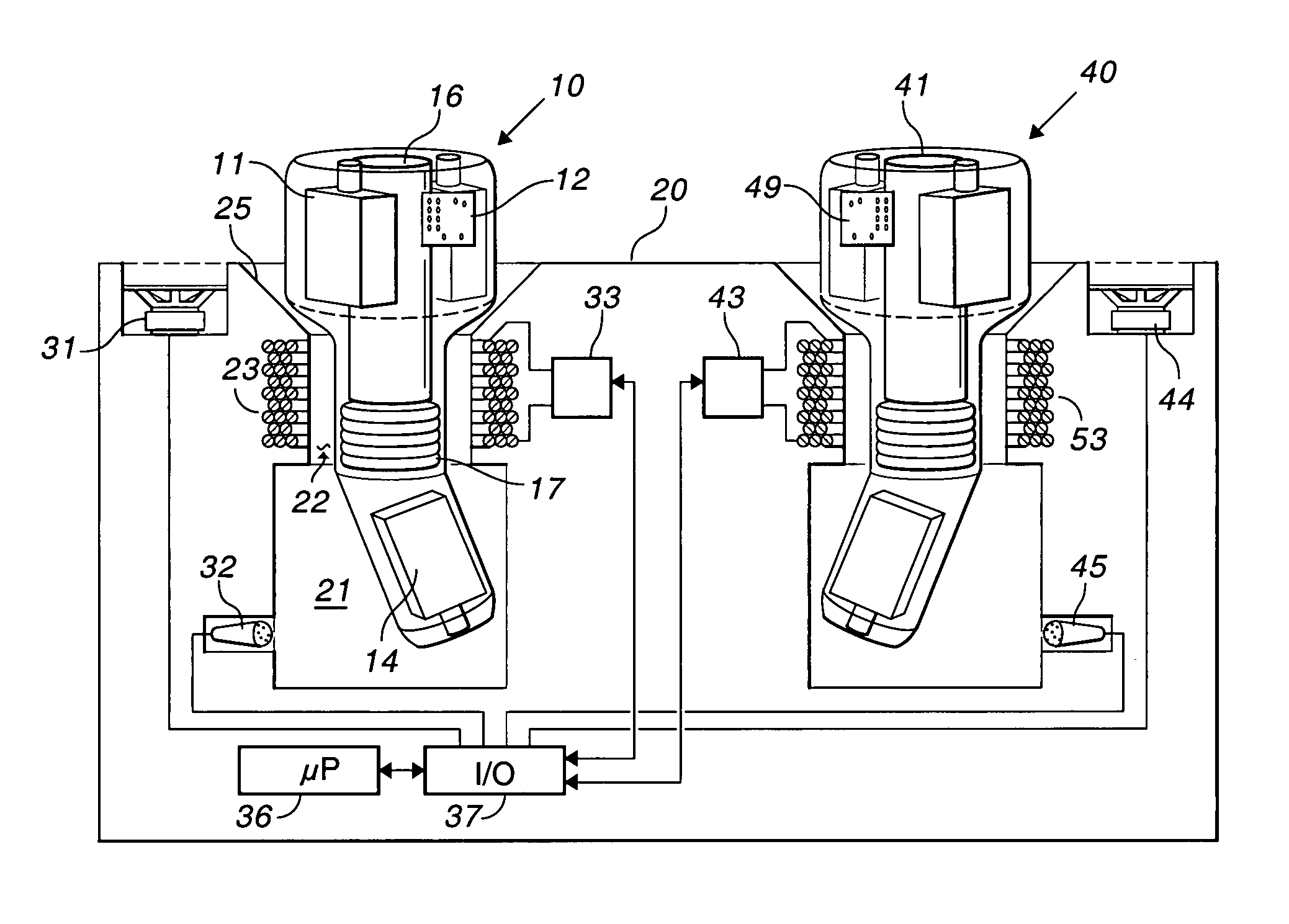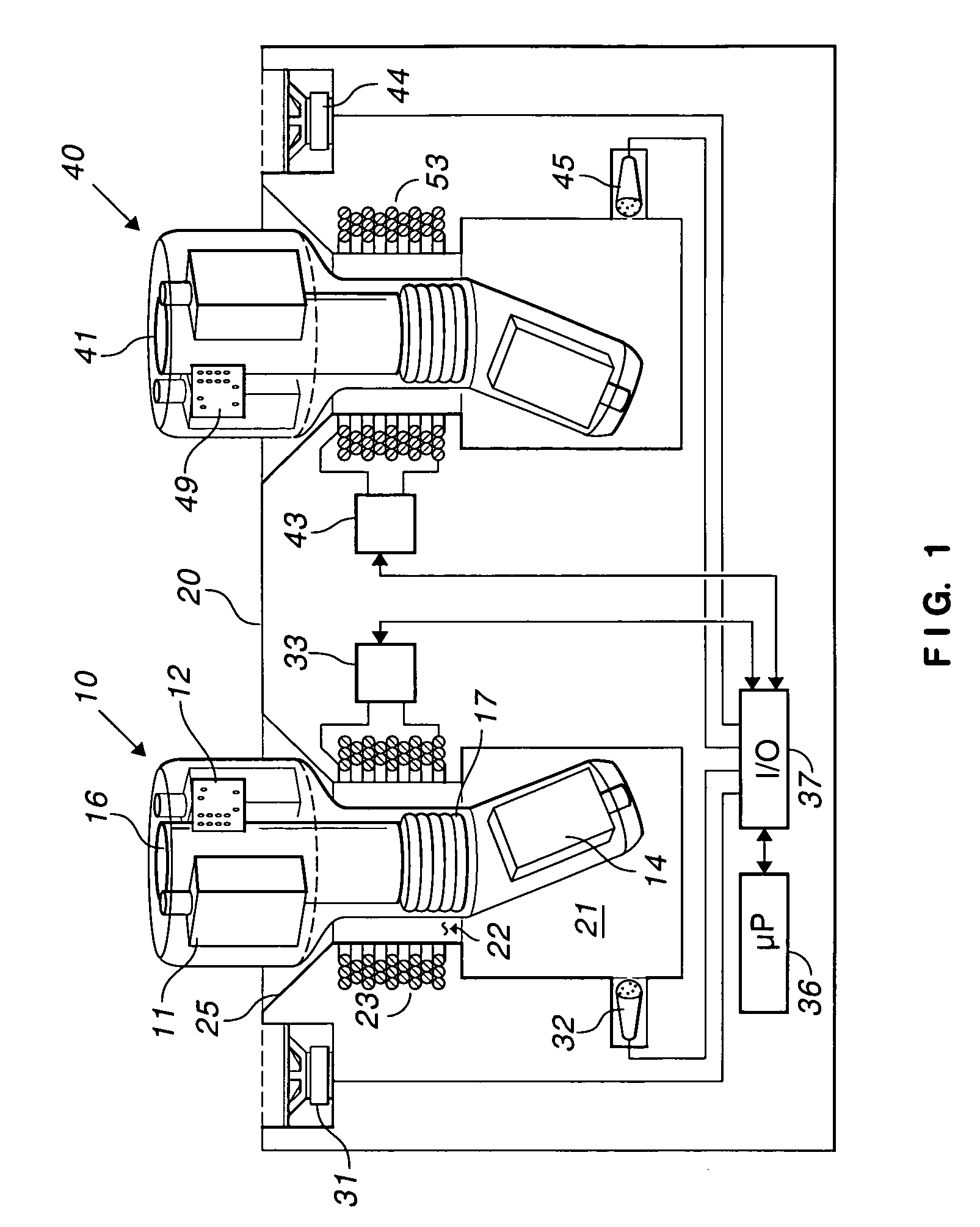Rechargeable hearing aid
a hearing aid and rechargeable technology, applied in the field of hearing aids, can solve the problems of inconvenient replacement of the battery, undesirable electrical contacts, and inconvenience of having to remove the battery from the hearing aid,
- Summary
- Abstract
- Description
- Claims
- Application Information
AI Technical Summary
Problems solved by technology
Method used
Image
Examples
Embodiment Construction
[0015]In the FIGURE, hearing aid 10 is inserted into charger 20 for charging. Although hearing aid 10 is illustrated as the type that is inserted into the ear, the invention can be used in other types of hearing aid, such as behind-the-ear hearing aids. Hearing aid 10 includes at least one microphone, such as microphone 11, a flex circuit or integrated circuit 12 containing a microprocessor for signal processing and other tasks, speaker 14, and rechargeable battery 16 for power. Beneath battery 16 is inductor 17, which is electrically coupled to circuit 12, as are the other electrical components. Dedicated electronics can be used instead of programmable electronics but programmable electronics are preferred.
[0016]The lower portion of hearing aid 10, containing speaker 14, fits easily within chamber 21. The middle portion of hearing aid 10 is located in chamber 22 within inductor 23. Inductor 17 and inductor 23 are more or less concentric but, as one of the advantages of the inventio...
PUM
 Login to View More
Login to View More Abstract
Description
Claims
Application Information
 Login to View More
Login to View More - R&D
- Intellectual Property
- Life Sciences
- Materials
- Tech Scout
- Unparalleled Data Quality
- Higher Quality Content
- 60% Fewer Hallucinations
Browse by: Latest US Patents, China's latest patents, Technical Efficacy Thesaurus, Application Domain, Technology Topic, Popular Technical Reports.
© 2025 PatSnap. All rights reserved.Legal|Privacy policy|Modern Slavery Act Transparency Statement|Sitemap|About US| Contact US: help@patsnap.com


